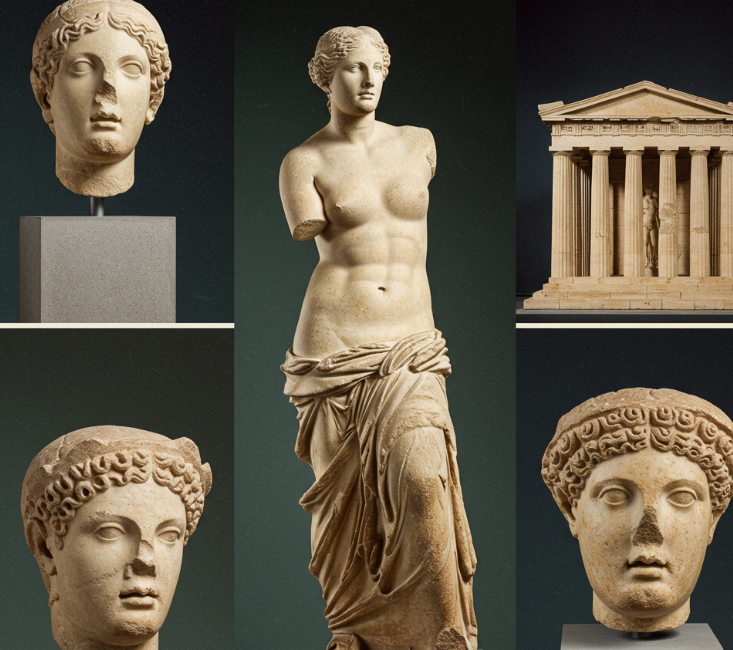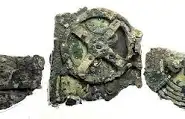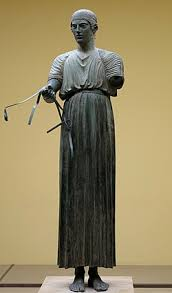Greece’s rich cultural heritage is showcased in museums worldwide, where some of the most significant artifacts from ancient Greek civilization are on display. From iconic sculptures to intricate jewelry, these treasures offer invaluable insights into the artistic and technological achievements of the Greeks. Here is a guide to must-see Greek artifacts and where to find them.
1. The Mask of Agamemnon
National Archaeological Museum, Athens
Discovered by Heinrich Schliemann at Mycenae in 1876, this gold funeral mask is one of the most famous artifacts of ancient Greece. It dates back to the 16th century BCE and is believed to have belonged to a Mycenaean ruler, although its connection to Agamemnon remains speculative.
2. The Parthenon Marbles
British Museum, London
These stunning sculptures, originally part of the Parthenon in Athens, depict scenes from Greek mythology and religious processions. Created under the supervision of Phidias in the 5th century BCE, they remain a subject of controversy due to Greece’s longstanding request for their return.
3. The Antikythera Mechanism
National Archaeological Museum, Athens
Often referred to as the world’s first analog computer, this intricate device dates back to the 2nd century BCE and was used to predict astronomical positions and eclipses. Its complexity continues to amaze historians and scientists.
4. The Venus de Milo
Louvre Museum, Paris
This iconic statue of Aphrodite, dating to around 130–100 BCE, is a masterpiece of Hellenistic sculpture. Despite missing arms, it remains one of the most celebrated representations of classical beauty and elegance.
5. The Riace Bronzes
National Archaeological Museum, Reggio Calabria, Italy
These two life-size bronze statues of warriors, dating to around 460–450 BCE, were discovered off the coast of Italy in 1972. Their incredible detail and craftsmanship provide insight into the skills of ancient Greek sculptors.
6. The Derveni Krater
Archaeological Museum of Thessaloniki, Greece
This ornate bronze vessel from the late 4th century BCE is decorated with intricate reliefs depicting Dionysian scenes. It is a prime example of Greek metalwork and its influence on later artistic traditions.
7. The Artemision Bronze
National Archaeological Museum, Athens
This magnificent statue, likely depicting Zeus or Poseidon, was recovered from a shipwreck near Cape Artemision. The dynamic pose and exquisite craftsmanship make it a masterpiece of classical Greek sculpture.
8. The Nestor’s Cup
Museum of Ischia, Italy
This ceramic cup, dating to the 8th century BCE, bears one of the earliest known inscriptions in the Greek alphabet. It references the legendary Nestor from Homer’s Iliad, showcasing early Greek literacy and poetic tradition.
9. The Delphi Charioteer
Delphi Archaeological Museum, Greece
One of the best-preserved bronze statues from antiquity, this piece commemorates a chariot race victory in the Pythian Games. It exemplifies the grace and realism achieved by Greek sculptors in the 5th century BCE.
10. The Eleusinian Relief
National Archaeological Museum, Athens
Depicting Demeter, Persephone, and Triptolemus, this relief is a key artifact linked to the Eleusinian Mysteries, one of the most important religious rites in ancient Greece.
Conclusion
Greek artifacts, whether in Greece or abroad, offer a fascinating glimpse into the achievements and beliefs of ancient civilization. These masterpieces continue to captivate visitors and scholars alike, preserving the legacy of Greek artistry and innovation for future generations.


















